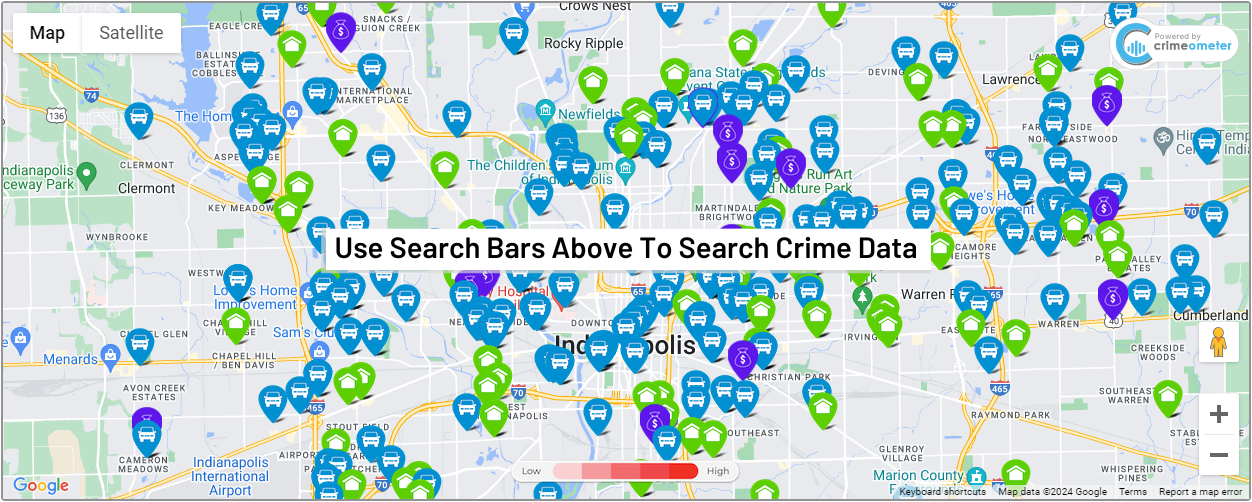Police in Grant County fighting extremely potent, deadly type of heroin
MARION, Ind. (WISH) – Officers with the Marion Police Department have found themselves fighting against heroin laced with fentanyl.
A detective with the department’s drug unit said, “We’re starting to see it on a very regular basis in the heroin we purchase or recover off of the streets.”
Fentanyl is a drug used to treat chronic pain. Hospital emergency rooms typically have the drug in vials, but it also comes in a patch form.
Officials said someone usually mixes the contents of the fentanyl patch with heroin and then sell it on the streets.
Dr. Daniel Rusyniak, medical director for the Indiana Poison Center at IU Health Methodist Hospital, said fentanyl is about 50 times more potent than heroin.
He said, “You’ll see a lot of deaths because it’s a lot more potent and a lot more powerful than heroin and people don’t know that.”
Dr. Rusyniak added, “You can get the high, but the big problem is that it causes respiratory depression. It makes people either slow their respiratory rate down or sometimes stop breathing altogether.”
The Indiana Drug Enforcement Administration said if you think of fentanyl as a box of salt, it only takes two grains for someone to overdose.
“These folks who inject often will be found dead with the needle still in their arm because it works so rapidly,” said Dr. Rusyniak. He added, “Probably the big thing out there for folks who are using heroin on the street is understand that this is always a risk.”
Grant County Coroner Chris Butche said, “[Those who mix the drugs] don’t go by a standard so you don’t know really how strong that purity is going to be.”
Between October 2015 and November 2015, Butche, who’s also an officer with the Marion Police Department, investigated three the deaths of three people, ages 25 – 47, who all died from using heroin laced with fentanyl.
He said, “The first one definitely was instant because the syringe was still stuck in the decedent’s arm.”
Toxicology tests showed one of the three people who died, had seven times the therapeutic level of fentanyl in their system. A second had five times the therapeutic amount.
Butche said, “It’s a nationwide epidemic.” He added, “It’s not being put out there, so to speak, that people are dying from this.”
The American Institute of Toxicology, an Indianapolis-based toxicology testing lab, released the following information regarding tests that have come back positive for heroin and non-prescribed fentanyl:
Indiana – 2015
Of all the urine specimens AIT tested in 2015 at the request of a healthcare provider in Indiana (typically to determine compliance with a prescribed medication regimen):
- 0.3 percent were confirmed positive by mass spectrometry for 6-MAM, a metabolite indicating heroin use.
- 0.4 percent were confirmed positive by mass spectrometry for non-prescribed fentanyl and/or its metabolite norfentanyl
- Of those specimens that confirmed positive by mass spectrometry for 6-MAM, 20.9 percent also confirmed positive for non-prescribed fentanyl and/or its metabolite norfentanyl
Indiana – 2014
Of all the urine specimens AIT tested in 2014 at the request of a healthcare provider in Indiana (typically to determine compliance with a prescribed medication regimen):
- 0.2 percent were confirmed positive by mass spectrometry for 6-MAM, a metabolite indicating heroin use
- 0.4 percent were confirmed positive by mass spectrometry for non-prescribed fentanyl and/or its metabolite norfentanyl.
- Of those specimens that confirmed positive by mass spectrometry for 6-MAM, 8.4 percent also confirmed positive for non-prescribed fentanyl and/or its metabolite norfentanyl.
Nationwide – 2015
Of all the urine specimens AIT tested in 2015 at a healthcare provider’s request (typically to determine compliance with a prescribed medication regimen):
- 1.7 percent were confirmed positive by mass spectrometry for 6-acetylmorphine (6-MAM), a metabolite indicating heroin use; a 231 percent increase from 2014.
- 1.3 percent were confirmed positive by mass spectrometry for non-prescribed fentanyl and/or its metabolite norfentanyl; a 184 percent increase from 2014.
- Of those specimens that confirmed positive by mass spectrometry for 6-MAM, 29.8 percent also confirmed positive for non-prescribed fentanyl and/or its metabolite norfentanyl.
Nationwide – 2014
Of all the urine specimens AIT tested in 2014 at a healthcare provider’s request (typically to determine compliance with a prescribed medication regimen):
- 0.7 percent were confirmed positive by mass spectrometry for 6-MAM, a metabolite indicating heroin use.
- 0.7 percent were confirmed positive by mass spectrometry for non-prescribed fentanyl and/or its metabolite norfentanyl.
- Of those specimens that confirmed positive by mass spectrometry for 6-MAM, 20.8 percent also confirmed positive for non-prescribed fentanyl and/or its metabolite norfentanyl.





